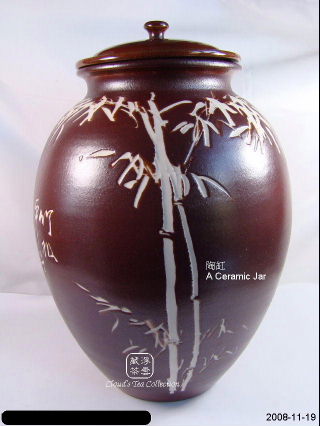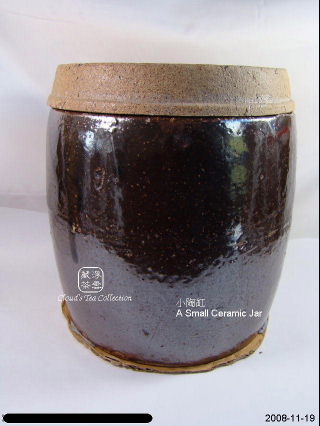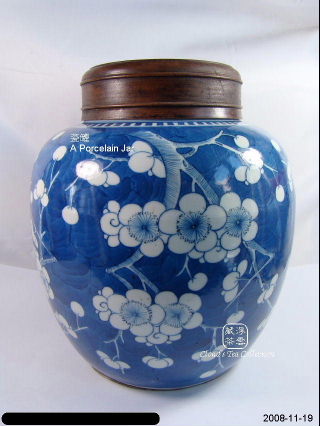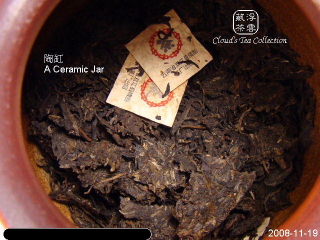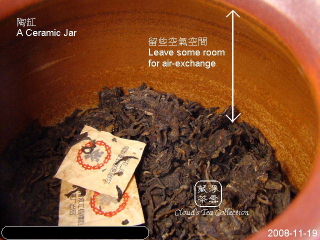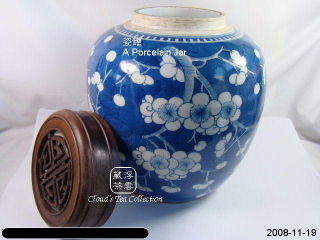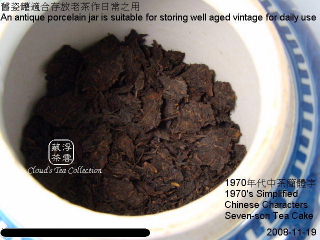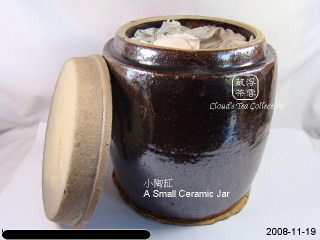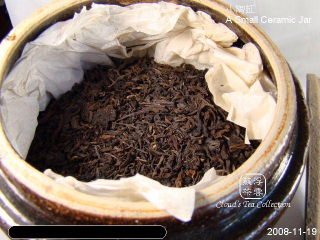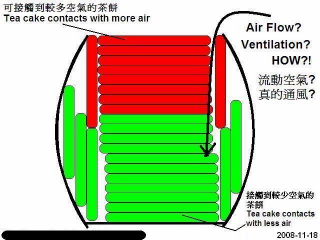 After setting up the Cloud's Tea Diary, Cloud often receives e-mails and private messages with questions related to Puerh tea. Those questions are good questions. Beginners may also have similar doubts when they start their Puerh tea journeys. Thus, Cloud decides to gather these Q&As to the Cloud's Tea Diary so that the later comers may make reference to my answers.
After setting up the Cloud's Tea Diary, Cloud often receives e-mails and private messages with questions related to Puerh tea. Those questions are good questions. Beginners may also have similar doubts when they start their Puerh tea journeys. Thus, Cloud decides to gather these Q&As to the Cloud's Tea Diary so that the later comers may make reference to my answers.
-----------------------
A Puerh tea lover, D, asked, "In the Philippines, the area where I live is quite humid. The range of relative humidity is around 65-90% (but 90% is really rare). On sunny days, it is 65%-70% while it is 75%-85% on rainy days. I would like to ask for advice on storage. I am planning on buying ceramic jars to put all my tea cakes in for storage and to be protected from humidity. And from time to time, I will open the cover to let some air in for circulation. Would you recommend using a porcelain jar? What do you recommend for storage? I do not prefer to use a dehumidifier and just want to try some natural methods."
In fact, in relation to how to store Puerh tea at home, Cloud has already put down the details as an appendix in the First Step to Chinese Puerh Tea (hardback edition) titled "How to Store Puerh Tea at Home (Part I)" and "How to Store Puerh Tea at Home (Part II)" in the Art of Tea magazine issue No. 3. If you are interested in learning the details, please read these relevant articles. Cloud did not intend to replace these articles by this diary. This diary is an interactive way to further elaborate based upon the articles.
Before you store your own young raw tea cakes into ceramic jars, you should know about the required aging conditions of young raw Puerh, i.e. the Five Principles, please refer to the Cloud's Tea Diary 2008-09-29 Storage (1) - Principles & Cardboard Box.
Humidity
First of all, what you need to know is that Puerh tea aging requires an appropriate level of humidity. Normally speaking, the normal range of humidity mentioned in the Cloud's Tea Diary 2008-09-29 Storage (1) - Principles & Cardboard Box is 70% to 80%. That is a quite suitable range for Puerh tea aging. However, your proposed suggestion, "I am planning on buying ceramic jars to put all my tea cakes in for storage and to be protected from humidity", has to be amended a little bit. The most appropriate way to handle the tea cakes is to protect them from excessive humidity. Normal range of humidity helps aging.Ceramic Jars
From the illustration, the cross section of a ceramic jar shows you the air-flow situation clearly (Photo A1080).Uneven Aging
A ceramic jar is not air-permeable. If you just open the cover to let some air in for circulation, Cloud would wonder how much air can be exchanged by simple diffusion, especially those tea cakes being stacked at the bottom. In the illustration, the tea cakes on top of other tea cakes (indicated in red - just a rough indication) can contact with more air so that it can age better.However, the air at the bottom of the jar is still air. There is not much air exchange. Certainly, although the tea cakes at the bottom contact with less fresh air, it does not mean that they will not age. It is expected that the tea cakes at the bottom (indicated in green - just a rough indication) will age slowly.
Solution
If you want the tea cakes being put in the ceramic jar aging evenly, you should mark their positions (for the sake of easy identification) and change their positions from time to time in order to make sure the bottom ones will become those near to the top of the jar. This is what we call "Storage Rotation". (P.190, A Glossary of Chinese Puerh Tea)If you store a few tea cakes, the interval for rotation may be 1 year. Cloud would advise that the rotation normally has to be done in autumn because the temperature and humidity will not be too excessive. If you rotate the tea cakes in spring when the humidity is high, the tea cakes may absorb excessive water contents (unless you do that in a room with low humidity). If these damp tea cakes are put at the bottom, with such a high dampness and dark environments, they will easily go molding.
Caution For Using Ceramic Jars
Although a ceramic jar is not air-permeable, this can be positive or negative.The positive side is that when the humidity outside the ceramic jar is high, say 85%, the tea being hoarded inside will not be much affected as long as the cover is properly covering up the jar because the wall of the ceramic jar is not air-permeable. The high humidity outside cannot largely affect the jar inside.
However, the negative side is that the tea cakes may go molding if, unfortunately, high humidity affects the jar inside. For example, tea lovers may forget to cover it up in Spring. Another careless situation is that the water contents of tea cakes are too high before putting them into the jar. For example, tea lovers handle the tea cakes in the day of high humidity so that the tea cakes are quite damp when they are put into the jar. Since the ceramic jar is not air-permeable, the water contents being trapped in the tea cakes have no way to go. The water contents cannot evaporate to the open air (outside of the jar). As a result, this provides a good molding environment. That is the reason why some tea lovers sadly discover that after several years of aging, the tea cakes in their lovely jars, especially those tea cakes at the bottom, go moldy.
Porcelain Jars
Definitely, Cloud uses porcelain jars to contain Puerh tea. The non-permeable nature of porcelain can also be a positive aspect for revitalizing the tea. When Cloud wants to appreciate an aged Puerh tea half a year later, Cloud will break up the tea cakes and put these chipped off pieces into these non-permeable jars to recover and gather the tea flavor. By their non-permeable nature, the flavor can be centralized in the jar and will not diffuse to the open air (outside) so that the tea flavor can be more evident. As you may notice from the photos in the tea photo albums, Cloud seldom put the whole stacks or entire tea cakes into these jars for the aging purpose.>What do you recommend for storage?
As you can see from Photo A0440, Cloud just adopts the odor free paper bags (the original paper bags used by tea factory) for containing the tea cakes in the my tea cellar. Surely, as the aging conditions of the tea cellar are relatively stable, there is no need for Cloud to use several paper bags to wrap up the tea cakes.High Humidity? Use More than One Paper Bags
If your home environment is often with high humidity, you may consider to use not just 1, but 2 to 3 paper bags to double up the number of paper bag layers. If the outer first layer absorbs a certain degree of dampness, you still have the second paper bags and the third paper bag for protection. Obviously, although this method can protect your tea cakes away from being too damp, too many layers of paper bags will also slow down the aging because there will be not much air exchange. You have to strike a balance between the aging and humidity.1 October 2008 wrote in English
Cloud (Hong Kong)
Back to: By Category reading mode
Cloud's Tea Diary
http://www.cloudsteacollection.com/html/weblog/weblog_e.html
Cloud's Tea Collection - Private Tea Album
http://www.cloudsteacollection.com
